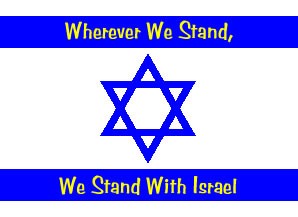
Thursday morning I read that at 6 am, when the sun was barely peeking over the horizon, Israel and Hamas entered into another uneasy truce. The ceasefire is supposed to be absolute, binding both the IDF and all terrorist groups in Gaza. If the truce lasts after several days, Israel agreed to reopen the Karni and Sufa goods crossings, allowing large quantities of food, fuel, building materials and other goods into the strip, in order to facilitate its economy. Once the Karni and Sufa crossings open - and prior to the reopening of the Rafah crossing - the negotiations to release kidnapped IDF soldier Gilad Shalit are to be accelerated.
Amos Gilad, Head of the Defense Ministry's Security-Diplomatic Bureau, said yesterday that "unless Gilad Shalit is released, the Rafah crossing will not be reopened” and; “I think the ceasefire is the only way we can hope to be able to facilitate Shalit's release."
To a Western audience, the word "truce" suggests a Hamas commitment to a peaceful resolution. In Arabic such a truce is referred to as “hudna.”
Hudna (هدنة) is an arabic term coming from a verbal root meaning "calm". It is sometimes translated as "cease-fire". In the Lisan al-Arab (Ibn al-Manzur's definitive dictionary of classical Arabic, dating to the 14th century) it is defined as follows: "hadana: he grew quiet. hadina: he quieted (transitive or intransitive). haadana: he made peace with. The noun from each of these is hudna."
“Shu'ada hudna?” (What is a hudna?) Sayed Ahmed Youssef, adviser to Palestinian Hamas PM Haniyeh, explained the meaning of "hudna" to us ignorant foreigners in the August pages of 2006 in the New York Times: “A truce is referred to in Arabic as a ‘hudna.’ Typically covering 10 years, a hudna is recognized in Islamic jurisprudence as a legitimate and binding contract.” - Americans should thank the New York Times for this bit of enlightenment. As we know, the US lacks Arab speakers, and this maybe the reason why the media nearly everywhere translates the term into English as "truce".
Will a hudna with Hamas really mark a "major breakthrough" toward a nonviolent future?
The answer lies in the historical meaning of the Muslim expression, Hamas' track record, and the terms of the road map itself. Hudna has a distinct meaning to Islamic fundamentalists, well-versed in their history.
It began with Islam's most revered founder, Muhammad. He declared a 10-year "hudna" with the Quraysh tribe that controlled Mecca in the 7th century. Two years into the hudna, Muhammad had acquired enough troops and arms to abrogate the hudna and conquer Mecca, the holiest city in Islam – decimating the Quraysh in the process.
This became known as the "Quraysh Model," which defines the meaning of a hudna. When you are militarily at a disadvantage, declare a "hudna" until you are militarily strong enough to discard it and win the war. This is a Muslim tactic that has been used over and over again throughout history with devastating success. According to Umdat as-Salik, a medieval summary of Shafi'i jurisprudence, hudnas with a non-Muslim enemy should be limited to 10 years: "if Muslims are weak, a truce may be made for ten years if necessary, for the Prophet made a truce with the Quraysh for that long, as is related by Abu Dawud" ('Umdat as-Salik, o9.16).
The "Quraysh-hudna" tactic is something that fits perfectly into the plans of terrorists who have already sworn they will never make a permanent peace with Israel.
Once Palestinians have a state, they can bring all manner of weapons and trained militants into the heart of Israel. Israel will be forced into indefensible borders and have only one ultimate military option – nuclear weapons.
The "hudna" that Muslims make with non-Muslims can never be more than temporary, and is entered into only because the Muslim side feels it is too weak to conduct open warfare, and would benefit from a respite from open hostilities. If the hudna is undertaken in order to give the Muslims time to gather their strength, then the Muslim side is then not merely allowed, but required, whenever it feels strong enough, to re-engage in open hostilities.
The idea of a permanent peace between Israel and Palestine is a "pipe dream." It is a self-deception for those who ignore the history of the Quraysh-Hudna Muslim tactic. To the followers of the Quran, this is just a tactical interlude in a long-term strategy for the ultimate annihilation of the state of Israel and the return of what they view as sacred Muslim soil to its rightful owner – Allah.
In the case of land previously conquered by Muslims, now under the control of "infidels," there is no time limit for the obligation of true Muslims to take it back for Allah. It never means a permanent peace. It is only a tactical interlude in which Muslims rearm for a successful jihad.
Hamas has proven time and again their commitment to a tactical hudna —
replenishing their strength during the quiet periods, then returning with increased deadliness. - As documented by The Washington Institute, Hamas agreed to no less than ten ceasefires in the past ten years, and after every single one returned freshly armed for terror. Hundreds of Israeli citizens have paid for these hudnas with their lives.
So beware of the limited cease-fire, called "hudna!"






No comments:
Post a Comment